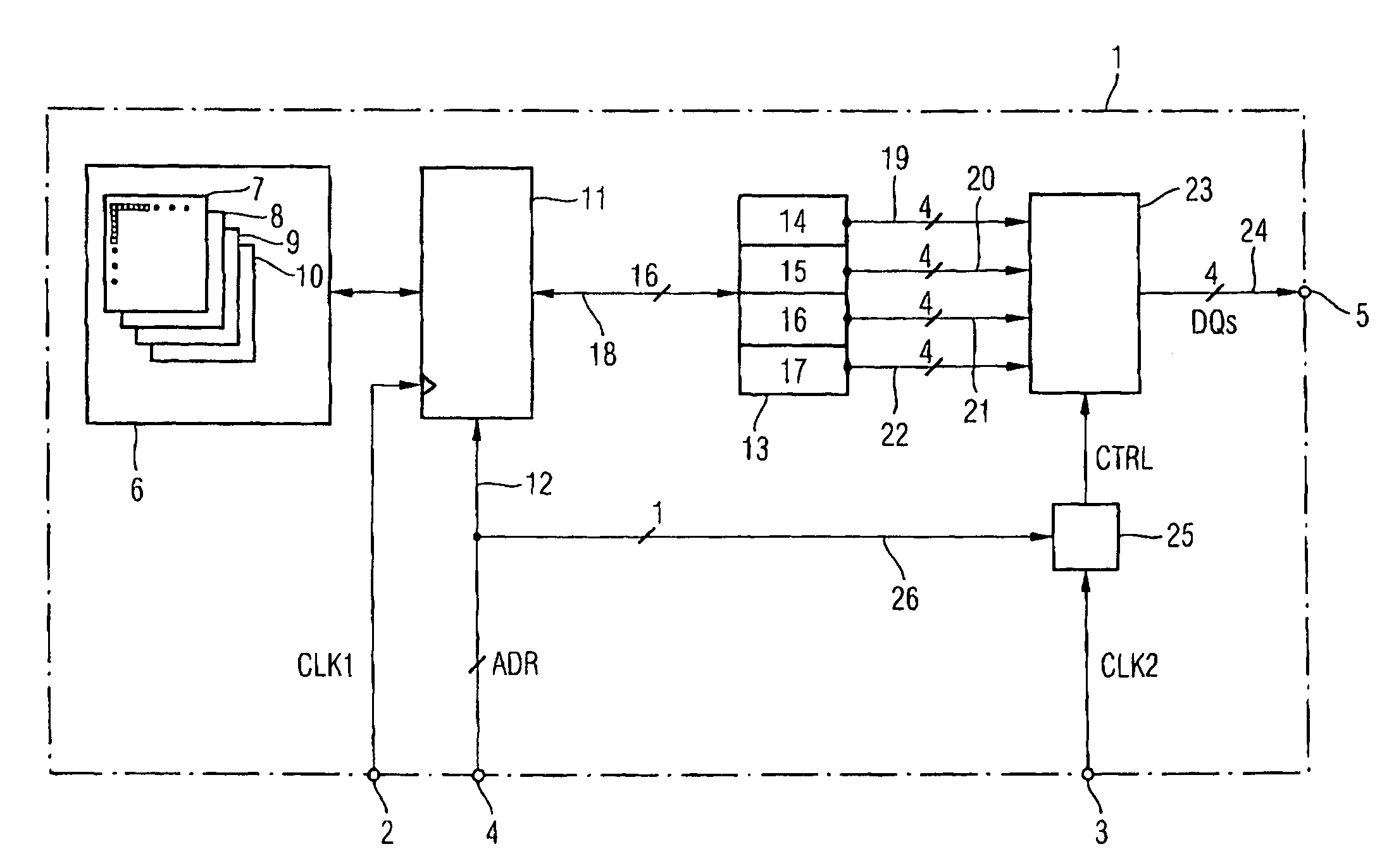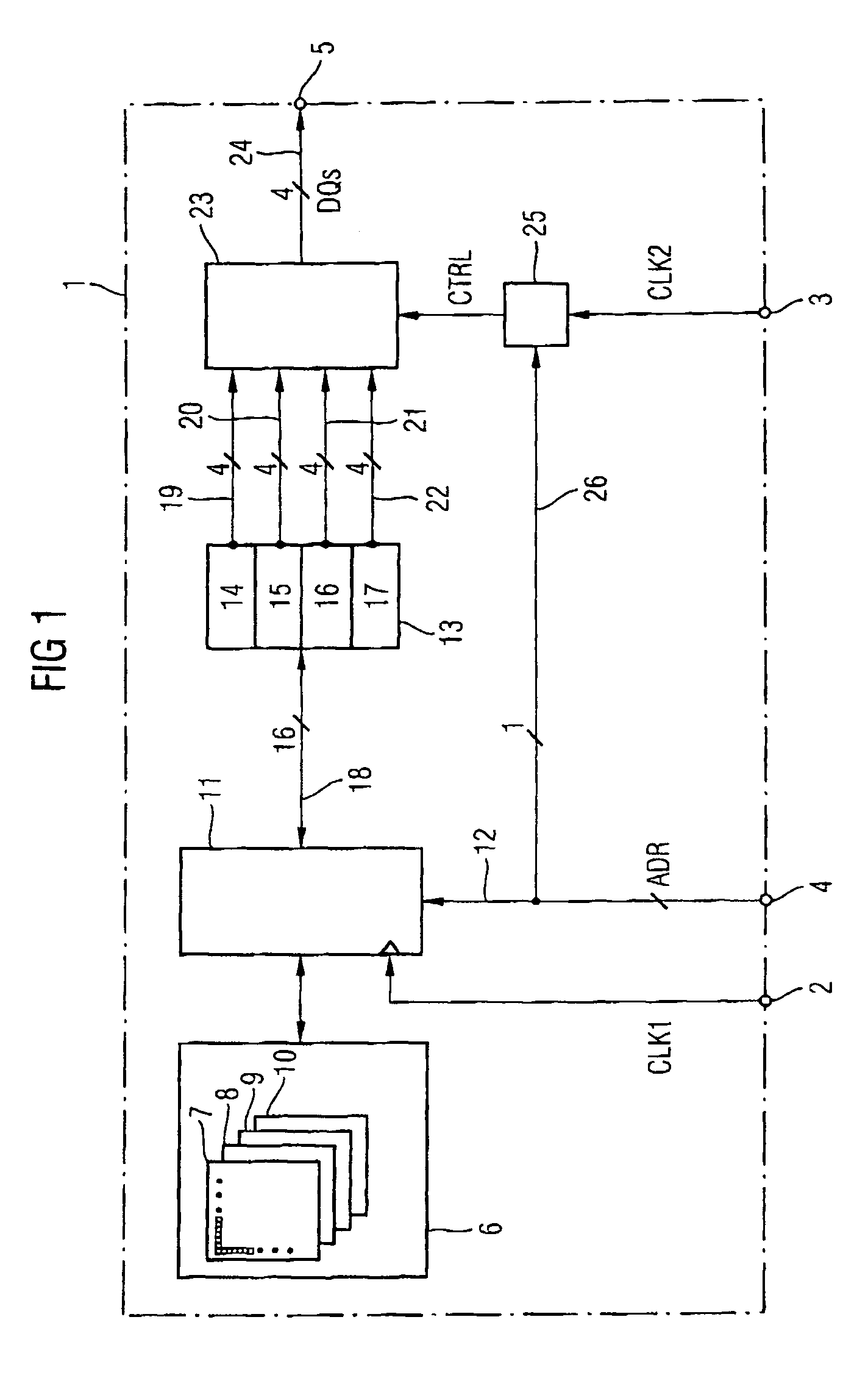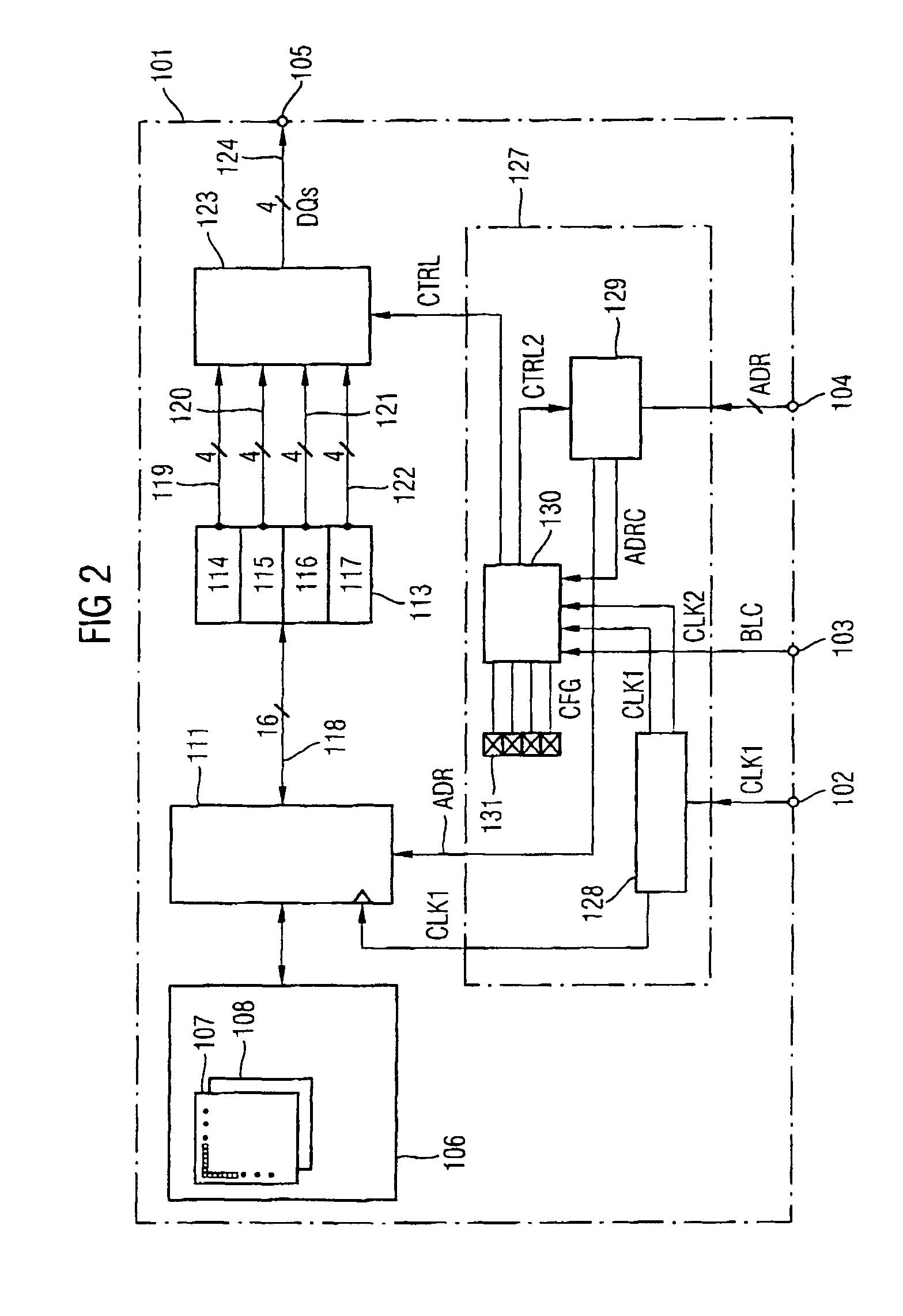Backwards-compatible memory module
a memory module and backward compatibility technology, applied in the field of backward compatibility memory modules, can solve the problem that production capacity can only be used inefficiently
- Summary
- Abstract
- Description
- Claims
- Application Information
AI Technical Summary
Benefits of technology
Problems solved by technology
Method used
Image
Examples
Embodiment Construction
[0056]Identical and functionally identical elements are provided with the same reference symbols in the figures.
[0057]FIG. 1 shows a block diagram of the memory module 1 according to the invention.
[0058]The memory module 1 has a first clock input 2 for the first clock signal CLK1, a second clock input 3 for the second clock signal CLK2, address inputs 4 for address signals ADR, and data inputs / outputs 5 for memory data DQs.
[0059]The memory module 1 according to the invention has a memory cell array 6, which in this case has four memory banks 7, 8, 9, 10 with memory cells, with the corresponding memory cells in this exemplary embodiment being organized in an organization based on groups of four. This means that four memory cells are addressed at the same time by one address. Four bits are thus activated, starting from one initial address.
[0060]A clocked read / write control device 11 is provided, which is coupled to the first clock input 2 and is clocked by the first clock signal CLK1....
PUM
 Login to View More
Login to View More Abstract
Description
Claims
Application Information
 Login to View More
Login to View More - R&D
- Intellectual Property
- Life Sciences
- Materials
- Tech Scout
- Unparalleled Data Quality
- Higher Quality Content
- 60% Fewer Hallucinations
Browse by: Latest US Patents, China's latest patents, Technical Efficacy Thesaurus, Application Domain, Technology Topic, Popular Technical Reports.
© 2025 PatSnap. All rights reserved.Legal|Privacy policy|Modern Slavery Act Transparency Statement|Sitemap|About US| Contact US: help@patsnap.com



